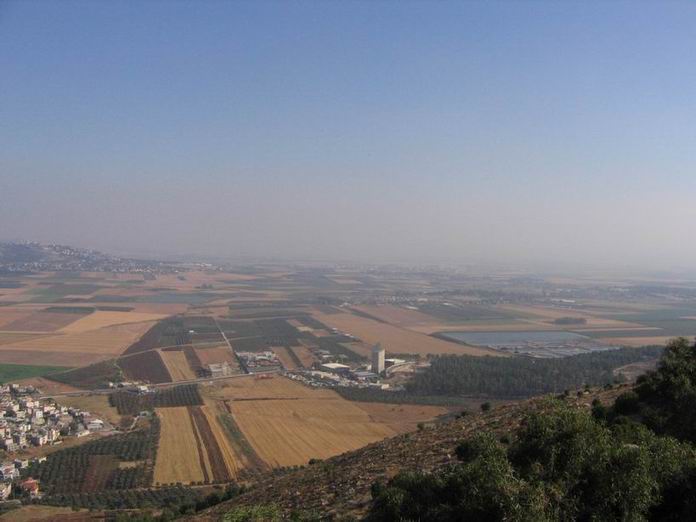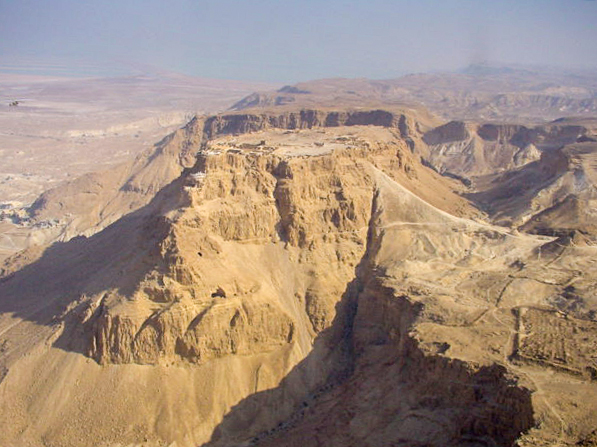|
Balfouria
Balfouria () is a moshav in northern Israel, south of Nazareth. Located near Afula, it falls under the jurisdiction of Jezreel Valley Regional Council. As of it had a population of . History The initial core of settlers assembled in 1919 and began training for the establishment of an agricultural settlement. A tract of land was purchased with the funds of the American Zion Commonwealth, and Keren Hayesod acquired equipment. The moshav was founded in 1922, the third to be established in Palestine, and was named after The 1st Earl of Balfour, writer of the Balfour Declaration (who consented to lending his name to the settlement), which embraced Zionist plans for a Jewish "national home". According to a census conducted in 1922 by the British Mandate authorities, Balfouria had a population of 18 Jews. According to a Jewish National Fund publication of 1949, Balfouria was the first village to be founded in Palestine after the Balfour Declaration. The founders were joined b ... [...More Info...] [...Related Items...] OR: [Wikipedia] [Google] [Baidu] |
Hapoel Balfouria F
Hapoel ( he, הפועל, lit. ''the worker'') is an Israeli Jewish sports association established in 1926 by the Histadrut Labor Federation. History During the British Mandate of Palestine period Hapoel had a bitter rivalry with Maccabi and organized its own competitions, with the exception of football, the only sport in which all the organizations played each other. At the time, Hapoel took no part in the ''Eretz Israel Olympic Committee'', which was controlled by Maccabi, and instead sought for international ties with similar workers sports organizations of socialist parties. Therefore, Hapoel became a member of SASI in 1927 and later was a member of CSIT. After the State of Israel was established, the rival sport organizations reached a 1951 agreement that allowed joint sports associations and competitions open for all Israeli residents. General sports clubs *Hapoel Jerusalem * Hapoel Tel Aviv *Hapoel Holon *Hapoel Haifa * Hapoel Rishon LeZion (handball), Hapoel Rishon Le ... [...More Info...] [...Related Items...] OR: [Wikipedia] [Google] [Baidu] |
American Zion Commonwealth
The American Zion Commonwealth ( he, קהילת ציון אמריקאית) was a Zionist settlement corporation that played an important part in the Jewish settlement of Palestine before the establishment of the State of Israel. The American Zion Commonwealth company was founded in the United States in 1914 by American Zionists with the purpose of acquiring lands for Jewish settlement in the Land of Israel. During World War I, the company's activities were suspended, but with the conquest of the land by the British and the establishment of the British Mandate, the company returned to full operation. It was most active in the 1920s. Activities and acquisitions The company acquired land in the heart of the western Jezreel Valley on which it established Moshav Balfouria in 1922. The town was named after the English Lord Arthur James Balfour, writer of the Balfour Declaration, which embraced Zionist plans for a Jewish "national home" in Palestine. In 1924, the company purchased th ... [...More Info...] [...Related Items...] OR: [Wikipedia] [Google] [Baidu] |
Nature Reserves In Israel
National parks of Israel are declared historic sites or nature reserves, which are mostly operated and maintained by the National Nature and Parks Authority. As of 2015, Israel maintains 81 national parks and more than 400 nature reserves, many of them in the occupied West Bank, that protect 2,500 species of indigenous wild plants, 32 species of fish, 530 species of birds and 100 species of mammals.Where the Golan’s rivers flow into the Sea of Galilee The Times of Israel. Aviva and Shmuel Bar-am. 29/08/15: "As time passed, and with the help of some extraordinary personalities with drive and ambition, the Knesset legislated two official Authorities to deal with our natural heritage: The National Parks Authority and the Nature Reserves Authority. Both began ... [...More Info...] [...Related Items...] OR: [Wikipedia] [Google] [Baidu] |
Balfour Declaration
The Balfour Declaration was a public statement issued by the British government in 1917 during the First World War announcing its support for the establishment of a "national home for the Jewish people" in Palestine, then an Ottoman region with a small minority Jewish population. The declaration was contained in a letter dated 2November 1917 from the United Kingdom's Secretary of State for Foreign Affairs, Foreign Secretary Arthur Balfour to Walter Rothschild, 2nd Baron Rothschild, Lord Rothschild, a leader of the British Jews, British Jewish community, for transmission to the Zionist Federation of Great Britain and Ireland. The text of the declaration was published in the press on 9November 1917. Immediately following their declaration of war on the Ottoman Empire in November 1914, the British War Cabinet began to consider the future of Palestine; within two months The Future of Palestine, a memorandum was circulated to the Cabinet by a Zionist Cabinet member, Herbert Sam ... [...More Info...] [...Related Items...] OR: [Wikipedia] [Google] [Baidu] |
Jezreel Valley Regional Council
Jezreel Valley Regional Council ( he, מועצה אזורית עמק יזרעאל, ''Mo'atza Azorit Emek Yizra'el'') is a regional council in northern Israel that encompasses most of the settlements in the Jezreel Valley. It includes 15 kibbutzim, 15 moshavim, 6 community settlements and two Bedouin villages. Despite its name, some of these settlements are not located in the Jezreel Valley proper, but in the vicinity. List of communities Kibbutzim *Alonim *Dovrat *Ein Dor * Gazit *Gevat *Ginegar *Hanaton * Harduf *HaSolelim *Kfar HaHoresh * Merhavia *Mizra *Ramat David *Sarid *Yifat Moshavim *Alonei Abba *Alon HaGalil *Balfouria *Beit She'arim (moshav) * Beit Zeid *Bethlehem of Galilee * HaYogev * Kfar Barukh * Kfar Gidon *Kfar Yehoshua * Merhavia *Nahalal *Sde Ya'akov *Tel Adashim * Zippori Community settlements *Adi * Ahuzat Barak * Givat Ela * Hoshaya * Shimshit *Timrat Timrat ( he, תִּמְרַת, ''lit.'' Date) is a community settlement in northern Israel. Located in the L ... [...More Info...] [...Related Items...] OR: [Wikipedia] [Google] [Baidu] |
Co-operative In Merhavia
Merhavia ( he, מֶרְחַבְיָה, lit. "Space of God") is a moshav in northern Israel. It falls under the jurisdiction of Jezreel Valley Regional Council and in had a population of . Founded in 1911, it was the first modern Jewish settlement in the Jezreel Valley. Etymology The name Merhavia is derived from the Book of Psalms . Out of my straits I called upon the LORD; He answered me with great enlargement. In the metaphorical sense: "God set me free" - the experience of the Jews immigrating to the Land of Israel and achieving a new homeland without the straits of persecution. History Co-operative The village was established as the Co-operative in Merhavia, a co-operative farm, at the beginning of 1911, based on the ideas of Franz Oppenheimer. The founders had arrived in the area in 1910 and consisted of members of ''Kvutzat Kibush'' and workers of the Second Aliyah. It was supposed to operate as a co-operative farm with differential wages, and was founded with the assistan ... [...More Info...] [...Related Items...] OR: [Wikipedia] [Google] [Baidu] |
Jewish Villages In Mandatory Palestine
Jews ( he, יְהוּדִים, , ) or Jewish people are an ethnoreligious group and nation originating from the Israelites Israelite origins and kingdom: "The first act in the long drama of Jewish history is the age of the Israelites""The people of the Kingdom of Israel and the ethnic and religious group known as the Jewish people that descended from them have been subjected to a number of forced migrations in their history" and Hebrews of historical Israel and Judah. Jewish ethnicity, nationhood, and religion are strongly interrelated, "Historically, the religious and ethnic dimensions of Jewish identity have been closely interwoven. In fact, so closely bound are they, that the traditional Jewish lexicon hardly distinguishes between the two concepts. Jewish religious practice, by definition, was observed exclusively by the Jewish people, and notions of Jewish peoplehood, nation, and community were suffused with faith in the Jewish God, the practice of Jewish (religious) la ... [...More Info...] [...Related Items...] OR: [Wikipedia] [Google] [Baidu] |
Populated Places Established In 1922
Population typically refers to the number of people in a single area, whether it be a city or town, region, country, continent, or the world. Governments typically quantify the size of the resident population within their jurisdiction using a census, a process of collecting, analysing, compiling, and publishing data regarding a population. Perspectives of various disciplines Social sciences In sociology and population geography, population refers to a group of human beings with some predefined criterion in common, such as location, race, ethnicity, nationality, or religion. Demography is a social science which entails the statistical study of populations. Ecology In ecology, a population is a group of organisms of the same species who inhabit the same particular geographical area and are capable of interbreeding. The area of a sexual population is the area where inter-breeding is possible between any pair within the area and more probable than cross-breeding with ind ... [...More Info...] [...Related Items...] OR: [Wikipedia] [Google] [Baidu] |
Moshavim
A moshav ( he, מוֹשָׁב, plural ', lit. ''settlement, village'') is a type of Israeli town or settlement, in particular a type of cooperative agricultural community of individual farms settler, pioneered by the Labor Zionism, Labour Zionists between 1904 and 1914, during what is known as the Second Aliyah, second wave of ''aliyah''. A resident or a member of a moshav can be called a "moshavnik" (). The moshavim are similar to kibbutzim with an emphasis on community labour. They were designed as part of the Zionist state-building programme following the green revolution Yishuv ("settlement") in the Mandatory Palestine, British Mandate of Palestine during the early 20th century, but in contrast to the collective farming kibbutzim, farms in a moshav tended to be individually owned but of fixed and equal size. Workers produced crops and other goods on their properties through individual or pooled labour with the profit and foodstuffs going to provide for themselves. Mosha ... [...More Info...] [...Related Items...] OR: [Wikipedia] [Google] [Baidu] |
Dunam
A dunam ( Ottoman Turkish, Arabic: ; tr, dönüm; he, דונם), also known as a donum or dunum and as the old, Turkish, or Ottoman stremma, was the Ottoman unit of area equivalent to the Greek stremma or English acre, representing the amount of land that could be ploughed by a team of oxen in a day. The legal definition was "forty standard paces in length and breadth", but its actual area varied considerably from place to place, from a little more than in Ottoman Palestine to around in Iraq.Λεξικό της κοινής Νεοελληνικής (Dictionary of Modern Greek), Ινστιτούτο Νεοελληνικών Σπουδών, Θεσσαλονίκη, 1998. The unit is still in use in many areas previously ruled by the Ottomans, although the new or metric dunam has been redefined as exactly one decare (), which is 1/10 hectare (1/10 × ), like the modern Greek royal stremma. History The name dönüm, from the Ottoman Turkish ''dönmek'' (, "to turn"), appears ... [...More Info...] [...Related Items...] OR: [Wikipedia] [Google] [Baidu] |
Tell (archaeology)
In archaeology, a tell or tel (borrowed into English from ar, تَلّ, ', 'mound' or 'small hill'), is an artificial topographical feature, a species of mound consisting of the accumulated and stratified debris of a succession of consecutive settlements at the same site, the refuse of generations of people who built and inhabited them, and of natural sediment. (Very limited snippet view).Matthews (2020)Introduction and Definition/ref> Tells are most commonly associated with the ancient Near East, but they are also found elsewhere, such as Southern and parts of Central Europe, from Greece and Bulgaria to Hungary and SpainBlanco-González & Kienlin, eds (2020), 6th page of chapter 1, see map. and in North Africa. Within the Near East, they are concentrated in less arid regions, including Upper Mesopotamia, the Southern Levant, Anatolia and Iran, which had more continuous settlement. Eurasian tells date to the Neolithic,Blanco-González & Kienlin, eds (2020), 2nd page of chapter 1 ... [...More Info...] [...Related Items...] OR: [Wikipedia] [Google] [Baidu] |






